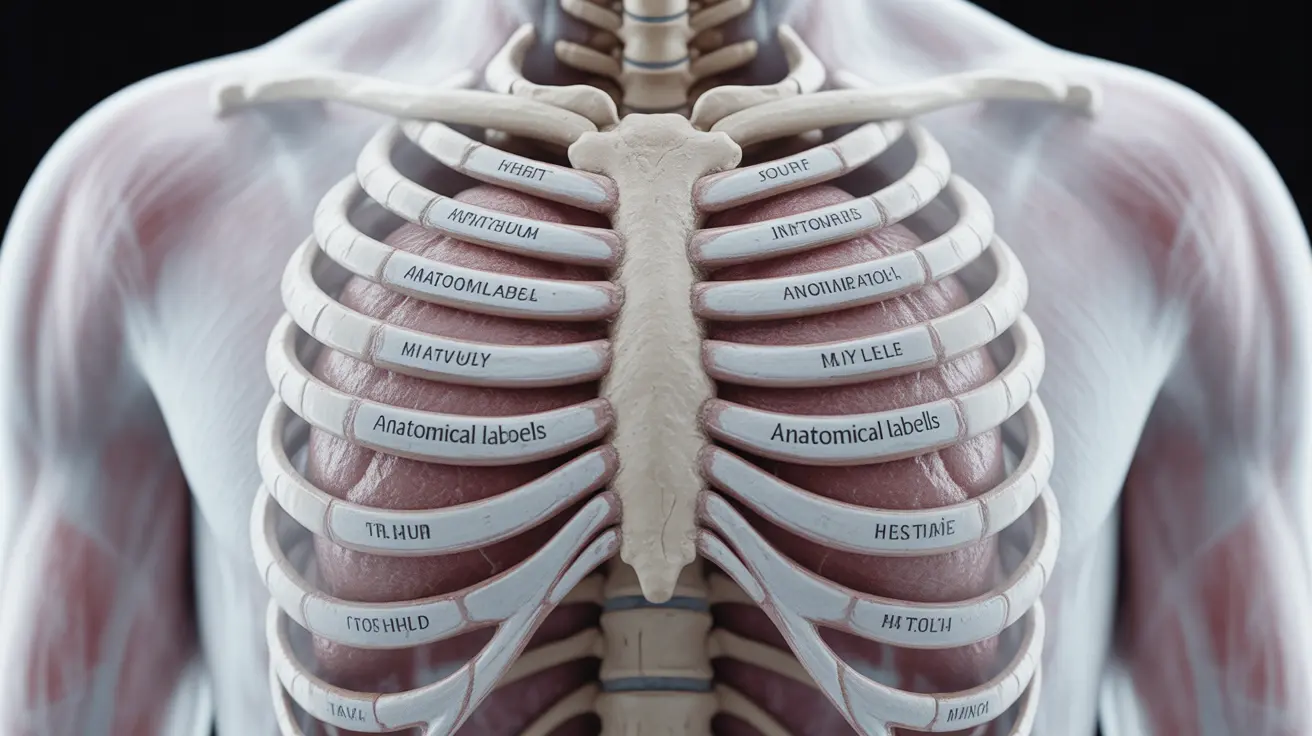The chest bones form a crucial protective framework for vital organs and play an essential role in breathing and upper body movement. This complex skeletal structure, consisting primarily of the sternum (breastbone) and ribs, works together to safeguard the heart, lungs, and major blood vessels while enabling respiratory function.
Understanding the anatomy and function of chest bones is vital for recognizing potential health issues and maintaining overall well-being. Let's explore the key components of chest bone anatomy and their significance in body protection and movement.
The Main Components of Chest Bone Anatomy
The chest bone structure consists of three primary components working in harmony:
The Sternum (Breastbone)
The sternum is a flat, dagger-shaped bone located in the center of the chest. It consists of three distinct parts:
- Manubrium (upper portion)
- Body (middle portion)
- Xiphoid process (lower tip)
The Ribcage
The ribcage includes 12 pairs of ribs, categorized into three types:
- True ribs (pairs 1-7): Directly connected to the sternum
- False ribs (pairs 8-10): Connected to the sternum via cartilage
- Floating ribs (pairs 11-12): Not connected to the sternum
Supporting Structures
Cartilage and connective tissues join these bones together, providing flexibility and stability during breathing and movement.
The Protective Role of Chest Bones
The chest bones serve several vital protective functions:
- Creating a protective cage around vital organs
- Supporting respiratory mechanics
- Providing attachment points for chest and shoulder muscles
- Maintaining upper body structural integrity
Common Chest Bone Conditions and Symptoms
Pain and Discomfort
Several conditions can cause chest bone pain:
- Costochondritis (inflammation of rib cartilage)
- Sternum fractures or bruising
- Muscle strain or injury
- Thoracic outlet syndrome
Warning Signs
Seek immediate medical attention if experiencing:
- Severe chest pain
- Difficulty breathing
- Visible deformity
- Pain that worsens with movement or breathing
Maintaining Chest Bone Health
Several strategies can help maintain chest bone health:
- Regular exercise focusing on proper posture
- Adequate calcium and vitamin D intake
- Protection during high-impact activities
- Proper lifting techniques
Frequently Asked Questions
What are the main bones that make up the chest and what roles do they play? The main chest bones include the sternum (breastbone) and 12 pairs of ribs. These bones work together to protect vital organs, support breathing mechanics, and provide attachment points for muscles essential for upper body movement.
How does the sternum protect vital organs in the chest? The sternum acts as a central shield in front of vital organs like the heart and lungs. It connects with the ribs to form a protective cage, absorbing and distributing impact forces to prevent injury to internal organs.
What are common symptoms and causes of pain in the chest bones, especially the sternum? Common causes include costochondritis, trauma, muscle strain, and inflammation. Symptoms may include localized pain, tenderness to touch, pain that worsens with breathing or movement, and discomfort during physical activity.
How do the ribs connect to the sternum and support breathing? Ribs connect to the sternum through cartilage connections, forming flexible joints that allow the ribcage to expand and contract during breathing. This flexibility is crucial for proper respiratory function.
Are there any variations or conditions involving the chest bones that affect health or require medical attention? Yes, several conditions require medical attention, including pectus excavatum (sunken chest), pectus carinatum (protruding chest), rib fractures, and congenital anomalies. These conditions may affect breathing, cardiac function, or cause chronic pain.




